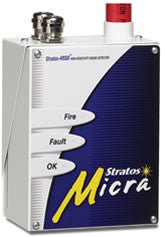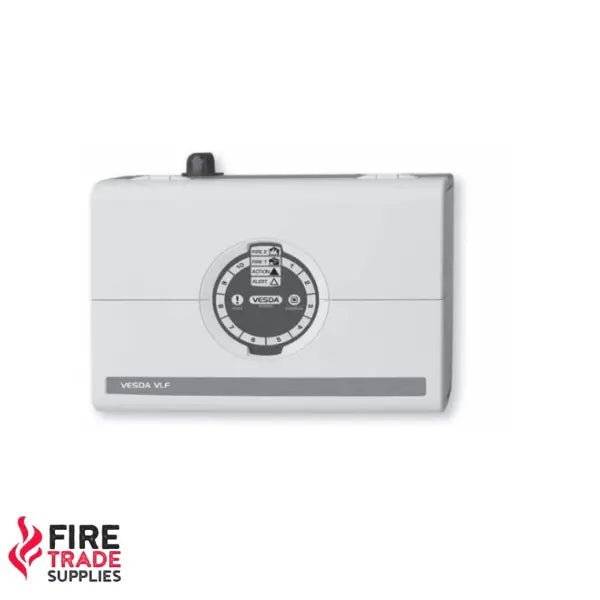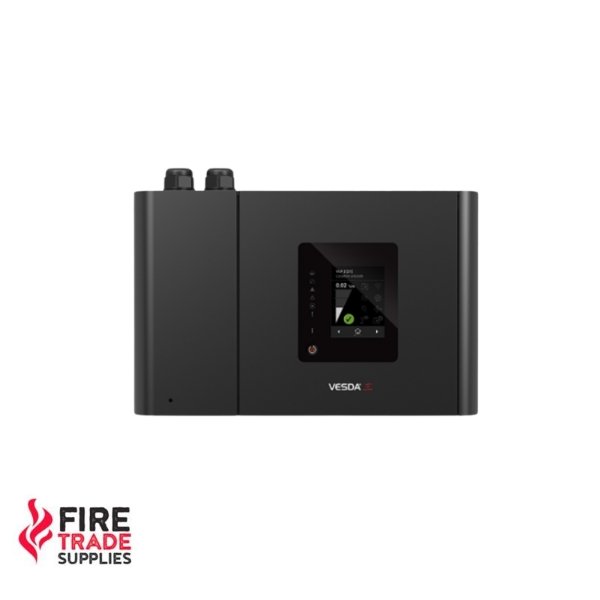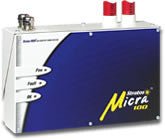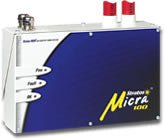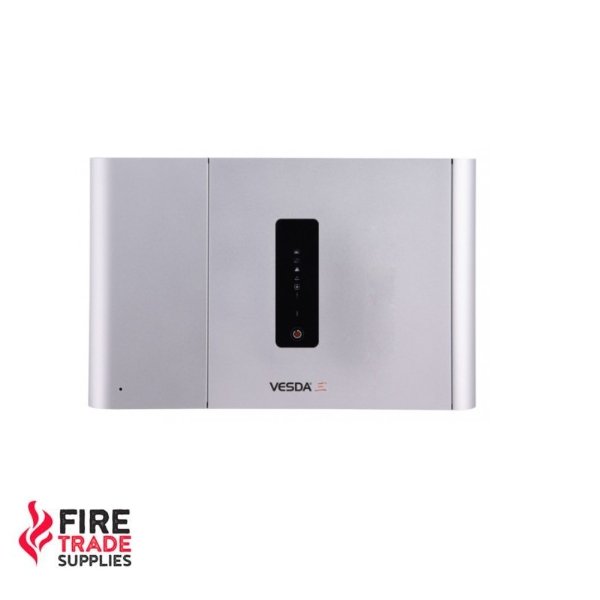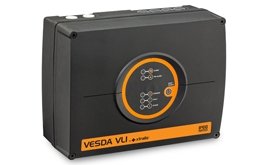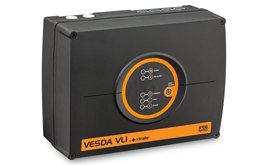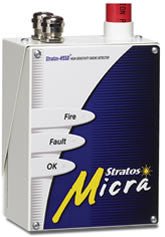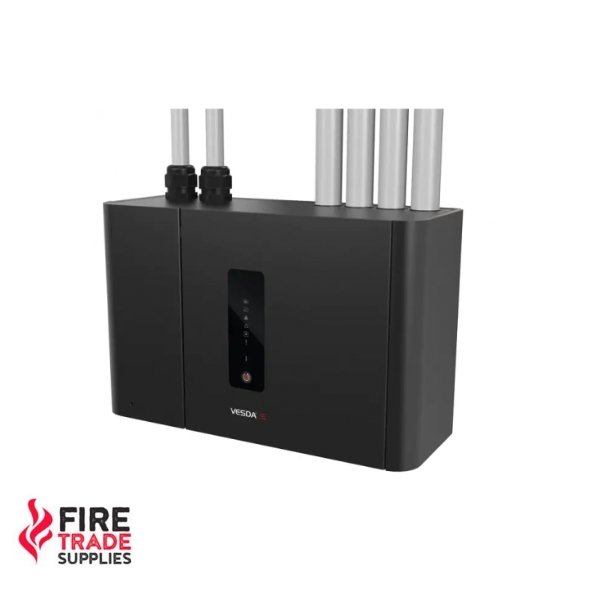
Introduction to Aspirating Smoke Detection
An aspiration fire alarm system works by drawing air through a network of aspirating pipework into a central detection chamber. This continuous sampling process allows the aspirating smoke detection system to identify smoke at the very earliest stage, making it one of the most sensitive fire detection technologies available.
How an Aspirating System Works
-
Air Sampling: Air is pulled through strategically positioned ASD pipes.
-
Filtration & Analysis: The air is filtered to remove dust before reaching the detection unit.
-
Smoke Detection: Advanced sensors analyse the air for smoke particles.
-
Alarm Activation: If smoke is detected, the system alerts occupants and responders.
This method is sometimes called an air sampling smoke detector or smoke aspiration system. Whatever the term, the principle is the same: aspirating systems provide faster, more accurate protection than conventional detectors.
Benefits of Aspirated Fire Detection Systems
All the aspirating smoke detectors sold here at Fire Trade Supplies cover:
-
Early Warning Protection: Detects smoke particles before visible smoke appears.
-
Reduced False Alarms: Advanced filtration ensures accuracy, even in dusty or humid environments.
-
Flexible Applications: Suitable for both small server rooms and large industrial plants.
-
Low Maintenance: ASD systems require only routine inspections and occasional filter changes.
-
Cost-effective in the long term: Despite a higher aspirating smoke detector price, they reduce downtime and damage in the event of fire.
Common Applications for Aspirating Systems
-
Data Centres & IT Facilities – Protect critical infrastructure with ultra-sensitive detection.
-
Hospitals & Healthcare – Minimise disruption while ensuring safety.
-
Museums & Archives – Safeguard irreplaceable artefacts with precise air aspiration systems.
-
Warehouses & Logistics – Cover large spaces where conventional detectors struggle.
-
Industrial Plants – Operate reliably even in dusty, high-airflow conditions.
Types of Aspirating Smoke Detectors
-
VESDA & FAAST: Industry-leading air sampling smoke detectors for high-sensitivity environments.
-
Securiton & Protec: Advanced options for industrial or specialised sites.
-
Compact Aspirators: Affordable solutions for smaller businesses.
No matter the brand, every aspiration smoke detector follows the same principle of continuous air sampling system monitoring.
Recommended Products
Installation & Maintenance of Air Sampling Systems
When fitting an aspirating fire alarm, correct design of the ASD pipe network is crucial. Pipes must be positioned to ensure effective airflow and optimal detection.
Routine maintenance includes:
-
Checking for pipe blockages
-
Replacing filters
-
Updating software in the detection unit
A properly maintained fire aspiration system can operate effectively for over a decade.
Compliance & Standards
To meet regulatory requirements, aspirating smoke detection systems should comply with:
-
EN54-20 – European standard for ASD performance.
-
BS 5839-1 – UK fire alarm code of practice.
-
NFPA 72 – US national fire alarm code.
Secure Your Premises with Fire Trade Supplies
At Fire Trade Supplies, we stock a wide range of aspirating smoke detection systems, including leading brands like VESDA and FAAST. Whether you need a compact air sampling detector or a full fire aspiration system, our expert team can help you select the right solution.
Explore our products above, or contact us for tailored advice on choosing the right aspirating system for your building.
Recently viewed
Vesda FAQ's
An aspirating smoke detector (ASD) is a highly sensitive fire detection system that draws air continuously through a network of small pipes. The sampled air is analysed in a central detection unit for smoke particles, allowing fires to be identified at the very earliest stage — often before they are visible.
Beam detectors project/receive a light beam across a space and alarm when smoke obscures the beam (line-of-sight device). ASD draws air through pipes to a detector for analysis—no line-of-sight needed and typically much higher sensitivity for very-early warning.
Very early smoke detection aspiration refers to the ability of ASD systems like VESDA to identify smoke particles at the incipient stage of a fire, often before they are visible to the human eye. This provides valuable time for investigation and intervention.
Transport time is the length of time it takes for air to travel from the sampling point through the pipework to the detection chamber. Short transport times (typically a few seconds) are critical to ensure early warning performance.
The two main types are:
Point-type detectors (ionisation or optical), mounted on ceilings.
Specialist detectors, such as beam detectors or aspirating smoke detection systems, designed for larger or more complex environments.
Signs include frequent false alarms, failure to respond to test smoke, warning lights or error codes on the unit, or visible dust build-up. In aspirating systems, reduced airflow or clogged pipework can also indicate issues.
Aspirating smoke detectors are ideal in environments where very early detection is required, or where traditional detectors may be unsuitable. Common scenarios include high-ceiling spaces, dusty or humid areas, mission-critical sites, and locations where rapid evacuation is difficult.
The small-diameter sampling pipe (ASD pipe) used to draw air from the protected area to the detector. Correct hole size/spacing and total pipe length are engineered during design to meet sensitivity/transport-time targets.
A fan/pump pulls air from the protected area through ASD pipework into a detection chamber. The air is filtered to remove dust, then optical sensors measure very low smoke concentrations and signal graded alarms.
It describes active, continuous air sampling to detect minute smoke particles at the incipient stage—giving time to investigate before escalation. VESDA systems are designed for this level of sensitivity.
Still Have Questions?
If we still haven't answered your question, you can contact us below and we will get back to you as soon as possible.

